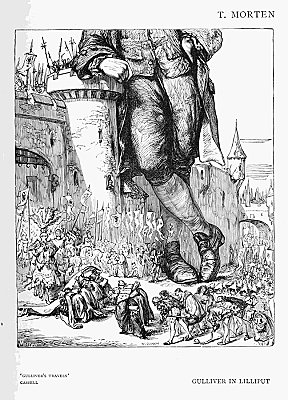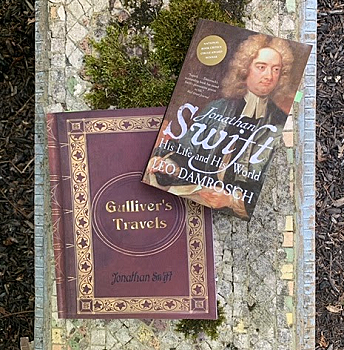On Gulliver, Swift, and Adam Smith

Part 1 of a #ReadWithMe Series
A Plain man is one who pays no regard to the common civilities and forms of good breeding. He gives his opinion bluntly and affirms without condescending to give any reason for his doing so, and if he mentions any sort of a reason it is only to shew how evident and plain a matter it was and to expose the stupidity of the others in not perceiving it as well as he.(L7, 86)
Swift on the other hand, who is the plainist as well as the most proper and precise of all the English writers, is despised as nothing out of the common road; each of us thinks he could have wrote as well…(L8 104)
Swift has attained to perfection the four things attributed to a good writer:
1st- That he have complete knowledge of his subject
2nd- That he should arrange all the parts of his Subject in their proper order
3rd- That he paint or describe the Ideas he has of these several in the most proper and expressive manner; this is the art of painting or imitation (or at least we may call it so).
(A footnote states that a 4th attribute may have been omitted by the scribe)
(L8 105)
That he paints but each thought in the best and most proper manner and with the greatest strength of colouring must be visible to any one at first sight. Now that a writer who has all these qualities in such perfection should not make the best stile for expressing himself in with propriety and precision can not be imagined. That he does this when he speaks in his own person we observed already and that he does so when he takes in the character of another is sufficiently evident from his Gulliver...(L8, 106)
He is taller by almost the breadth of my nail, than any of his court; which alone is enough to strike awe into the beholders. His features are strong and masculine, with an Austrian lip and arched nose, his complexion olive, his countenance erect, his body and limbs well proportioned, all his motions graceful and his deportment majestic. He was then past his prime, being twenty-eight and three quarters old, of which he had reigned about seven in great felicity, and generally victorious. (Ch. 1)
...commanded his general to draw up the troops in close order, and march them under me; the foot by twenty-four abreast, and the horse by sixteen, with drums beating, colours flying, and pikes advanced. This body consisted of three thousand foot and a thousand horse. His majesty gave orders, upon pain of death, that every soldier in his march should observe the strictest decency with regard to my person; which however could not prevent some of the younger officers from turning up their eyes as they passed under me: and to confess the truth, my breeches were at that time in so ill a condition, that they afforded some opportunities for laughter and admiration. (Ch. 1)
I must confess no object ever disgusted me so much as the sight of her monstrous breast which I cannot tell what to compare with, so as to give the reader an idea of its bulk, shape, and colour. It stood prominent six feet, and could not be less than sixteen in circumference. The nipple was about half the bigness of my head, and the hue of that and the dug, so varied with spots pimples and freckles, that nothing could appear more nauseous: for I had a near sight of her, she sitting down, the more conveniently to give suck, and I standing on the table. (Ch. 2)

Related Links:
Shannon Chamberlain, Gulliver's Travels: Adam Smith's Favorite Novel
Alice Temnick with author Leo Damrosch, AMA on The Club
Comments
Thank you, Alice, for an intriguing consideration of Swift's stylistic influences on Smith's rhetorical theory. You allude to something that I now wonder about as well, which is, how else might have reading a journey-novel affected Smith, and particularly his social theory? Beyond being wellsprings of good style, novels introduce us to other people, other social worlds. I unfortunately have not yet read Gulliver's Travels, but I would be curious to hear from others who may have about the possible relationship between what one reads there and the vignettes we get in, say, the Theory of Moral Sentiments. Did great works of fiction present Smith with morally illustrative substance, as well as style? For anyone else interested in this question, I would definitely recommend the article by Shannon Chamberlain linked above. And I look forward to the next installment of this #ReadWithMe series!
Shanon,
Thank you for commenting and for your question: how else might have reading a journey-novel affected Smith, and particularly his social theory? I've been thinking about this a lot and as well as what period in Smith's life he first read Gulliver. As you noted, novels introduce us to other people; they also impact us differently at various stages in our emotional and intellectual development. I hope you'll add Gulliver to your reading list, as you certainly sound like a person that cherishes good books!
Alice